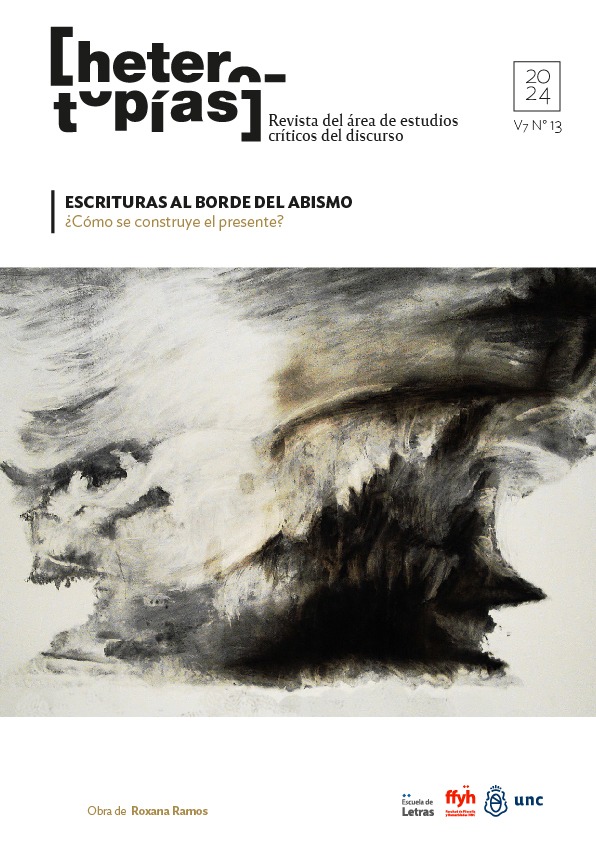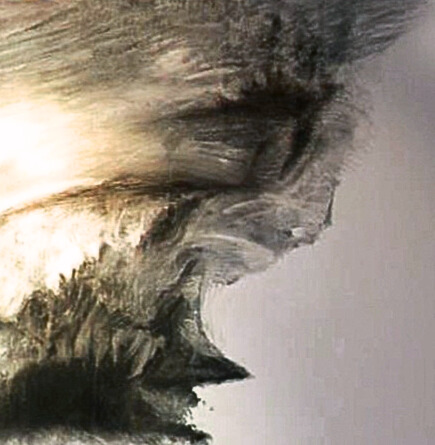
Heterotopías is a virtual journal founded in 2018 that publishes in the Open Knowledge Journal web in Universidad Nacional de Córdoba. It was designed by the Critical Discourse Studies Department from Humanities and Philosophy School as a biannual publication meant to be a common place to spread theoretical work and field experiences related to critical analysis and the understanding of the discursive dimension of cultural and social phenomena, in Foucault’s words, ‘inside a set of relations that delineates sites which are irreducible to one another and absolutely not superimposable on one another’. From an interdisciplinary perspesctive, Heterotopías aims to gather critical study productions for discoursive refutation of the site we live in.
Its main purpose is to be a platform for publishing scientific textual productions and supporting academic work on this area of study, considering the diversity of approaches and the necessary integration of different disciplines.
Two editors work on each issue and select the contributions to be published. Submissions are open to anyone interested in this field of study, which favors participation, especially, from faculty, graduates and students, as well as researchers from other academic institutions and other countries, depending on each issue’s characteristics.
Regarding its structure, the journal is organized in biannual issues revolving around specific thematic units, alongside a set of sections dedicated to provide information of academic interest, such as bibliographical reviews or news about conferences and scientific meetings. .
ISSN: 2618-2726
Vol. 7 No. 13 (2024): Writings on the edge of the abyss: How is the present constructed?

The 13th issue of the journal Hetereotopías presents, in addition to its usual sections, a dossier coordinated by Dr. Lucía De Leone and Dr. Nora Domínguez of the Instituto de Investigaciones de Estudios de Género, Facultad de Filosofía y Letras, Universidad de Buenos Aires. The dossier, entitled "Writings on the edge of the abyss: how is the present constructed?", gathers articles that propose a reflection on the personal and collective experiences of traumas, radical anguish, maximum precariousness, imminent catastrophes and extinction that have nurtured with different motifs and forms the obverse and reverse sides of history, accounting for the infinite number of subjective, affective and political variations that constitute the experience of bodies. In the words of the coordinators, our era is marked by the proliferation and lack of hierarchy of writings, by the profusion of styles and proposals, by the multiplication of fictions, and by the questioning of the status and borders of the humanities. In response to this, the dossier proposes a set of personal and collective experiences, always situated and their textual materialities, as part of the gestures of intervention at this juncture.
The cover image of this issue is the work of Salta artist Roxana Ramos. Ramos has a degree in Fine Arts from the National University of Tucumán and a PhD in Humanities with a focus on Arts from the same university. She works as a visual artist, teacher and art manager, with a research focus on art from Salta and contemporary Latin American art. She has received numerous awards and recognitions, among them the "Premio 8 M", from the National Ministry of Culture, the National Fund for the Arts Scholarship for Creation and the Montessori Scholarship from the University of Salamanca, Spain. The e-editorial Bosquemadura of Córdoba will publish in the coming months her ebook Oír lo que queda, tocar la huella. Drawings, sculptural objects, videos, installations and performances, with essays by a team of internationally renowned researchers.
https://www.instagram.com/roxramosnavarro/
Published:
2024-06-25
View All Issues
About us
Heterotopías is an academic journal originated in the frame of meetings and debates in the Critical Discourse Studies Department at School of Letters. It aims to be a platform for publishing scientific textual productions and supporting academic work on this area of study, considering the diversity of approaches and the necessary integration of different disciplines.
This journal encourages teamwork, discussion, academic production, and the evaluation of research on critical sociodiscoursive studies by generating spaces for reflection on this theory, its methodology and application, from meaningful contributions to social, academic and disciplinary debate.
This activity allows us to think of intellectual property as freedom of speech and the right to access to culture based on the communication of content on the web, which makes it possible to take part in the progress and challenges of the Open Science movement, especially in Latin America and the Caribbean.


